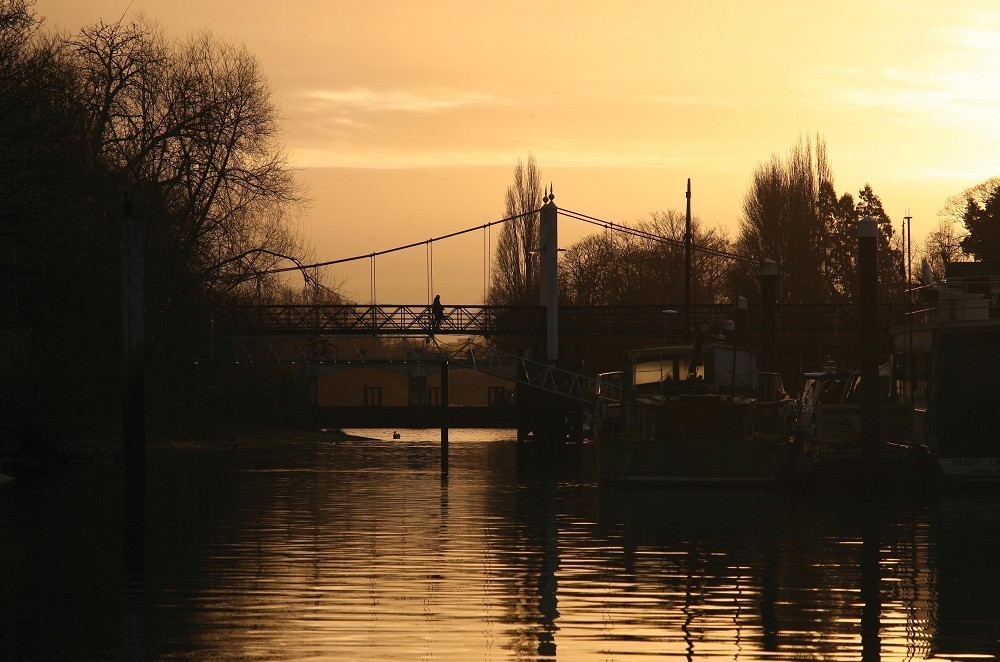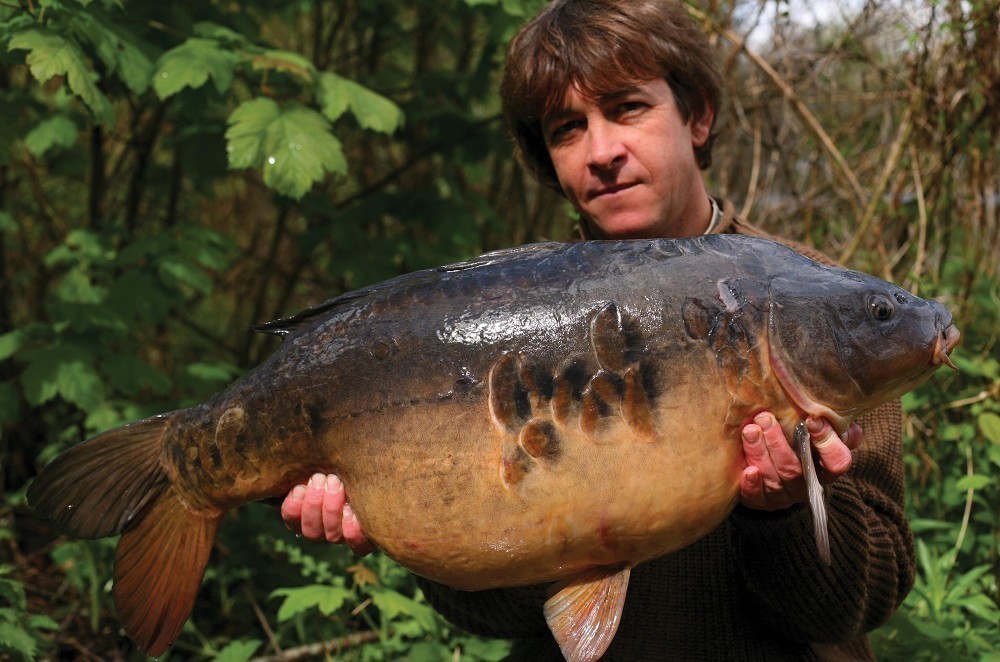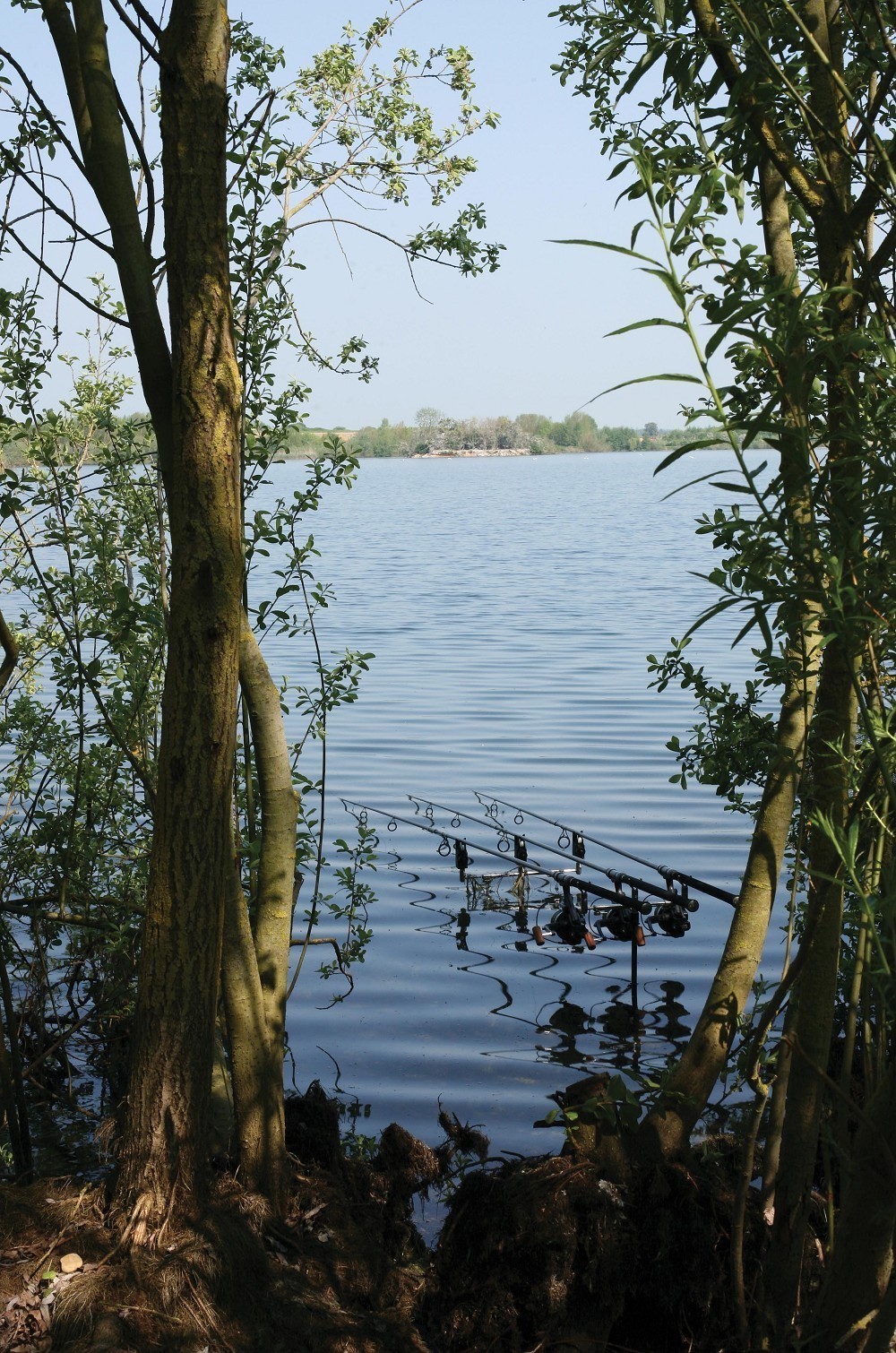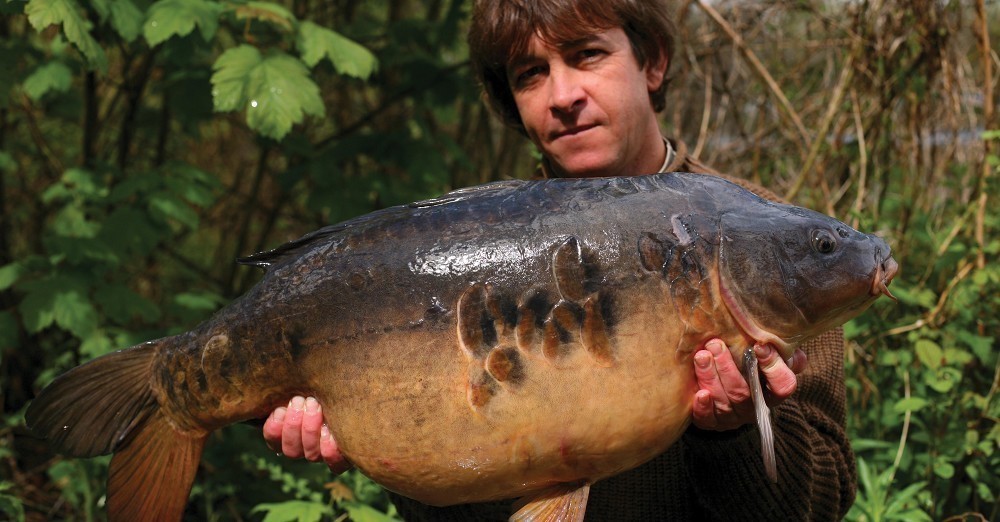
Terry Hearn's Angling In A Pie Chart
Here it is. Terry breaks down each aspect of his angling, split into percentages and the reasons as to why... #ThrowbackThursday
When Rob and Joe asked me to put together an article based around how important I feel each different aspect of my carp fishing is, and then put it into percentages, at first I thought ‘easy’. For certain, watercraft and location are the most important parts to me, followed by bait and then rigs, and so I started to jot down a few notes on paper, putting different percentages alongside each.
The thing is, the more I thought about it the more I realised that there are many things in carp fishing that add up to a successful formula, and each part’s importance can vary greatly from venue-to-venue. For instance, I’ve already said that I consider bait to be one of the most important things, but then once you have confidence in a good bait it’s not really something that needs to be thought about too much. I know I can take Dynamite’s Red Fish to pretty much any big carp venue and no matter what the carp are used to seeing I can be certain that they’ll still take a liking to mine. On the other hand, no matter what bait you’re using a boilie is still a boilie, and there are certain times when changing to tiger nuts will up your catch-rate as much as 100%.
When your bait works fine from the off it’s easy to think it’s not that important, but when a switch to something completely different ends a long run of blanks with a multiple catch in a single sitting the percentage of how much of an influence your bait is having on your results goes up considerably.
The same can be said of each different aspect I’ve listed, and how important you consider each to be will vary from water-to-water, from season-to-season and sometimes even from day-to-day. And so, the percentages I’ve listed are just to give a general idea of what I think and should by no means be treated as gospel. That’s the beauty of this great past time of ours; remember that nothing is set in stone and that the most consistently successful anglers are those that have learnt when to make a change. They realise when it’s necessary to put more thought into location, when their rigs need tweaking or even changing all together, when their bait or baiting up needs more thought and even when they need to up their game by being a little more organized… in short, when to adapt.
Location/Watercraft 51%
Really I wanted to give this field an even higher percentage, as to me it’s by far the most important part of carp fishing, which is why it’s been given that extra 1%. Unlike rigs and bait it’s not something that can be taught or given away very easily. As with most things in carp fishing, a general understanding can be gained through reading and talking with others but a true understanding only comes about by doing as much as you can and learning from both your successes and failures. It’s something that comes through experience and the more venues you fish the more you learn. I’ve never met an old hand with lots of angling experience who hasn’t developed a high degree of watercraft and location skills, as quite simply the three go hand-in-hand.
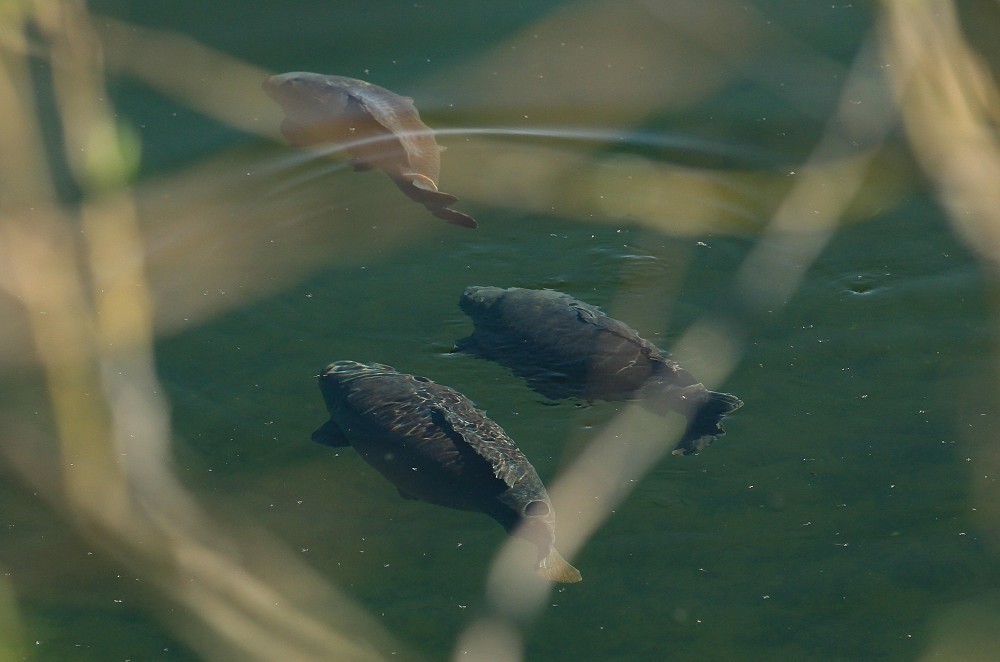 A couple of rarely caught big ‘uns which I spent some time watching through the spring. To me, location and watercraft are the most important things of all
A couple of rarely caught big ‘uns which I spent some time watching through the spring. To me, location and watercraft are the most important things of allFollowing on from that I’ll say this: no matter how many waters you’ve fished or how good you think your watercraft skills are, there is always room for improvement. A good test of yourself is to look back three or four years and then think about what you’ve learnt in that time. You should be able to think of a few things that you’ve picked up or at the very least stuff you already knew that you’ve honed up on.
To me the ultimate test is to get it right in the winter on a big low stocked pit, when the carp aren’t actually on show and giving themselves away. Those that can consistently get it right just by reading the water are already more than halfway there. They’ve developed an instinct that tells them where to fish as the conditions change. When to fish on the wind and when to get off the back of it, when to target the deeps and when to hit the shallows, when to fish up in the water and when to fish tight to the bottom – all the little things that make a carp angler successful.
I’ll also add that there’s a big difference between being able to catch carp from wherever you fish at all times of the year and singling out the biggest. On some venues it’s just a case of catching as many as you can and the law of averages says that the big fella will come along in the end, but I can think of several venues that I may have never caught my target fish from if I’d fished in such a way. Burghfield’s big common is the perfect example of this and I know that it would never have come if I’d just fished for carp. The biggest carp are generally big for a reason, because they are different, and sometimes they require a lot more thought to catch.
At the end of the day it all boils down to what you want to get out of your carp fishing. Are you happy just chilling out, enjoying your surroundings and catching the odd carp from time-to-time? Or do you want to be top rod? Or do you want to catch the ultimate prize? If ever you’re unsure then the best way of answering that is by asking yourself whether you would have chosen the water you’re fishing if the big ‘un wasn’t in there? If the answer is yes and you’re perfectly happy fishing for whatever comes along then great, that’s a lovely relaxing way to fish and you never know your luck. But, if it’s the ultimate prize you’ve set your sights on then the art of watercraft and location needs taking to the next level.
One more thing, I think that those country folk who have spent their lives immersing themselves amongst nature and all it has to offer are far more likely to pick it up than a town or city person. My dads a true countryman who’s been carp fishing for around ten years now. At 61 years of age and still working hard he doesn’t go anywhere near as much as me, but even so he’s been quietly catching his fair share each year.
Early this spring, after getting amongst them pretty early at Kingsmead One he commented to me how something felt different this year and that he felt ‘more in tune’. I smiled, knowing exactly what he meant. A couple of weeks later he rang me up very early one morning proud as punch with the capture of Kingsmead’s first 50lber. Well done dad, blooming awesome!
Bait And Baiting Strategies 20%
Obviously bait is very important, as even with all the knowledge of the above, if your bait is pants it’s going to show in your results. Saying that, nowadays with so many top quality baits on offer it’s difficult to go too far wrong. However, when talking bait there’s a lot more to take into consideration than just what you’re using. How you apply it is equally important, i.e. knowing how much to use and when to put it in.
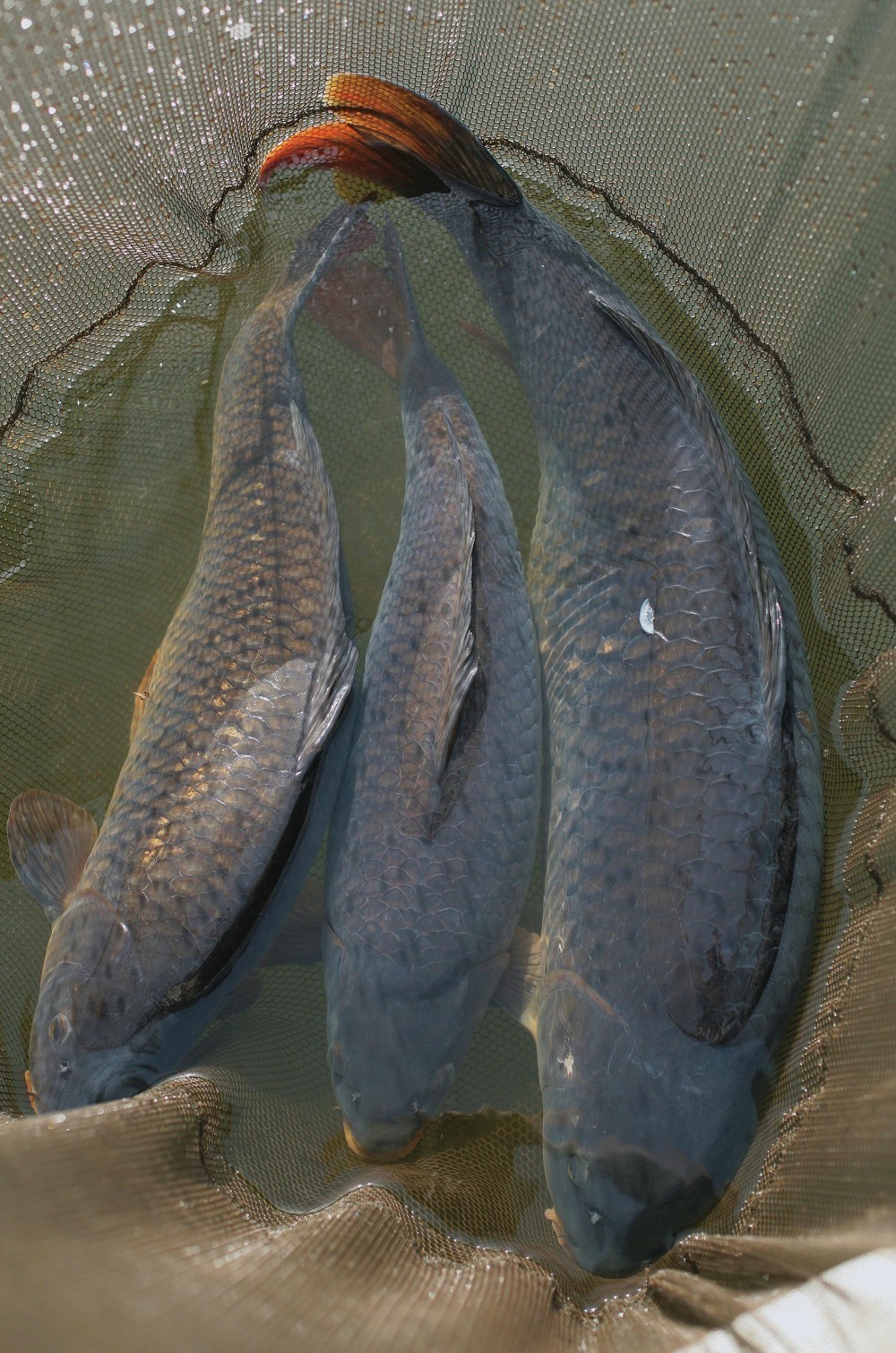 ...and a fine trio of commons caught within minutes of each other after applying a lot of bait over a long period of time
...and a fine trio of commons caught within minutes of each other after applying a lot of bait over a long period of timeOn waters with a large and healthy stock of carp, as well as other competing species like bream and tench, plus the birdlife, it’s possible to get through an awful lot of bait in a short space of time. The Thames is a classic example and with so many hungry mouths I can think of one or two spells where I’ve been able to get through up to fifteen kilos every other day. But, if your chosen water has a very low stock of carp it’s worth giving a lot more thought to your baiting up.
A few years ago I fished a fifteen-acre pit which only contained two carp. Good spots were very few and far between and so the last thing I wanted was to muck them up by putting in too much bait that was only going to go off and turn those spots sour. In this sort of situation it’s necessary to pay close attention to the weather forecasts and only bait spots that are likely to receive good conditions, so as to maximise the chances of carp actually finding it. There’s no point continuing to bait a spot in the height of summer when the wind’s forecast to be blowing the other way for the next week.
Rigs And Presentation 15%
Just like bait, your rigs and the way in which you present them is very important. I’ll start off by saying something that I’ve already said countless times before: the most important part of any rig is the sharpness of your hooks. It doesn’t matter how good your rig or presentation is, if the hook’s not sharp then you won’t be fishing properly, and so however you go about it, always make sure to be using as sharp a hook as possible. Whether you’ve already learnt how to pick the sharpest hook from the sharpest of patterns or whether you’ve decided to go down the sharpening your own route, which for certain is beneficial with many patterns of hooks (particularly the larger sizes), either way just make sure they are as sharp as possible.
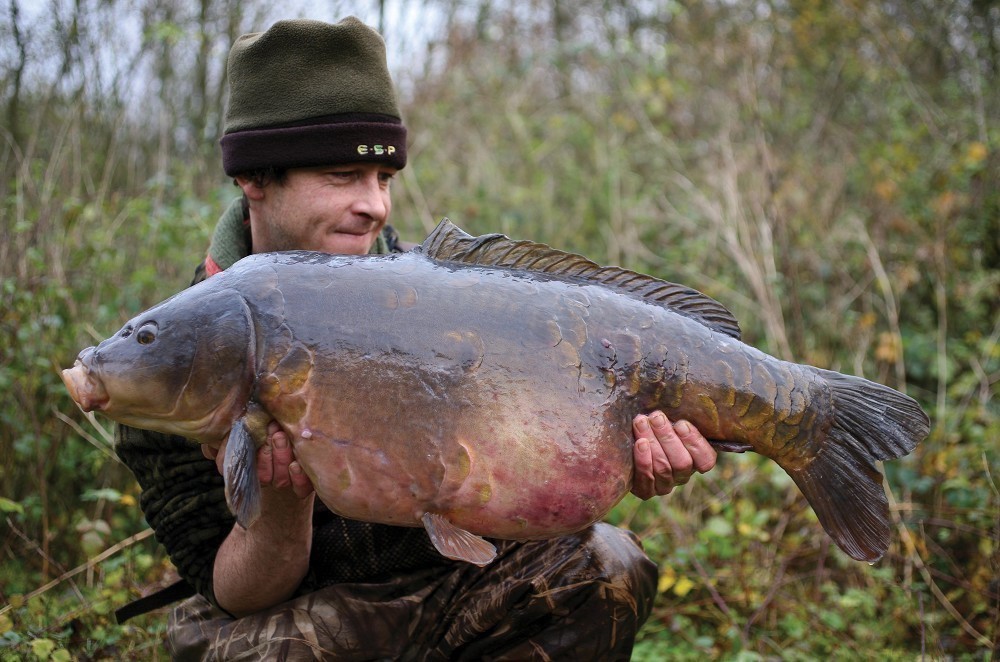 Burghfield’s Double Belly at 33lb+. Changing from pop-ups to bottom baits made a massive difference when it came to fooling the older fish
Burghfield’s Double Belly at 33lb+. Changing from pop-ups to bottom baits made a massive difference when it came to fooling the older fishNot so long ago an old friend commented that it was about time that I started sharpening my hooks. Really? The truth is I’ve been using the sharpest hooks available for as long as I can remember, and advocating it over and over again ever since I first started writing.
Excepting that you’re using a sharp hook on a good rig, and you’ve learnt how to feel for a drop, thus ensuring decent presentation, there are still many times when a change or a small tweak can make a massive difference. Perhaps the most obvious is to change from pop-ups to bottom baits and I can think of loads of occasions when making this change has turned it all around for me.
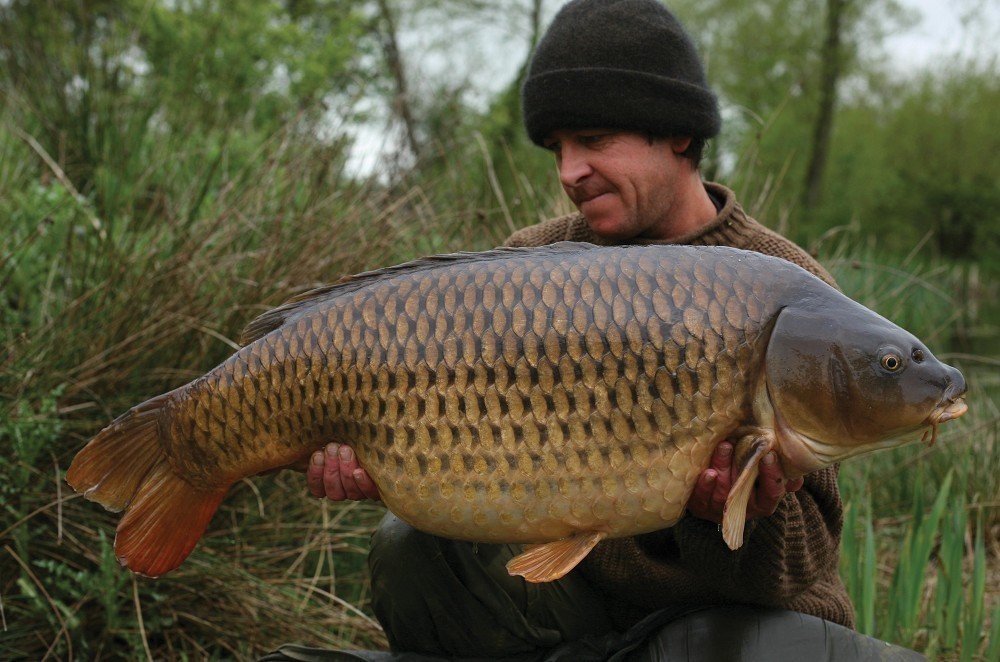 Ashmead’s Long Common at 39lb. Though it’s still early days I get the feeling that giving a little extra thought to my rigs is going to be worthwhile
Ashmead’s Long Common at 39lb. Though it’s still early days I get the feeling that giving a little extra thought to my rigs is going to be worthwhileWhilst on the subject of rigs I’m going to take the opportunity to say a thing or two about the Chod Rig, which has gained massive popularity since I first gave it its name and started writing about it way back in my early, and at the time weekly, Angling Times diary pieces. The truth behind where it originated from seems to have become a little twisted with the passing of time and so I think it’s about time I set the record straight.
Anyone who’s been about long enough will remember that the short, stiff, curved, lighter blobbed, D-rigged pop-up section, now sold by various companies in little packets with Chod Rig written on them, was actually borrowed directly from my version of the Hinge Stiff Link. I should know, as it was me that borrowed it! As I’ve written many times before, it was that master of thought, Frank Warwick who came up with the idea behind the presentation, i.e. fishing a pop up directly off the leader, but the actual hooklink for the Chod Rig was mine and already in existence. When Frank showed me his original Short Rig all those moons ago all I did was lose the boom section from my own tweaked and already perfected version of the Hinged Stiff Link and then slide my backstop even further up the line (I was already well accustomed with fishing the back stop up to a foot away from the lead, silt rig style). Frank showing me his Short Rig meant I was now able to present my already proven pop-up section on areas that were previously a bit hit and miss with the Hinge Stiff Link, i.e. on choddy or weedy ground. This is why it got a different name, because it was a variation. I used it with my own hooklink and I fished it free running on the leader, and even then I made sure to credit Frank as being the man behind the presentations idea in my writings, including both my books.
I give good mention to the Hinge and Chod Rigs because that little pop-up section has been the most successful form of pop-up presentation for a lot of anglers for sometime now, catching an incredible amount of big carp from a huge variety of waters. Whether it’s fished on the end of a boom section, directly off a length of leadcore, or off the main line ‘Chodernoster’ style, which I wrote about a little further down the line (nowadays referred to as the ‘Naked Chod’…), that little stiff curved hooklink is a real winner.
To give everyone who deserves credit a proper mention would take a lot more words, which I plan to do in my next book, but Mike Kavanagh deserves credit for his earliest versions of the Stiff Rig, as well as friends such as Alan Welch, Lewis Read, Nigel Sharp and my old mate ‘Ev’, all of which played their part, if not in its conception then by helping to popularise its use.
There are a hundred and one different types of hooks and hooklink materials that could have been used with a popped up straight off the leader style of presentation, but why bother when the best version is already in existence. Let’s be honest, it’s why so many companies have followed ESP’s lead by coming up with their own brand of stiff, memory-free type mono’s and Stiff Rigger/Choddy type hooks.
And so, to my mind, rigs really deserve more of a percentage but if I’m not careful I’ll be going well over the 100% limit. Going back to the mid- to late-nineties when my early Amnesia/Continental Boilie Hook versions of that little stiff pop-up section were helping me to outwit carp as special as Heather, Mary, The Black Mirror, Two Tone etc., I honestly think the percentage of how much of an influence it was having would have been greater than 15%, but as with most things in carp fishing, once everyone’s onto something it’s not quite the edge it once was.
Determination 8%
As I’m writing this from the perspective of a big fish angler I had to give determination a high percentage. What I mean here is staying power. Having the determination and the will to succeed whatever your venue throws at you. Being able to think past an obstacle rather than taking the easier option of going somewhere else after just a couple of blank trips. I can think of one or two very good anglers that could catch carp from just about anywhere asked of them, but when it comes to fishing for a particular fish and being able to break through the pain barriers they just don’t want to do it. There’s absolutely nothing wrong with this and if I had to choose someone to catch carp to save my life then they’d be at the top of my list, but when it comes to fishing for one particular fish it’s simply not their cup of tea. We all do it for different reasons.
Organisation 5%
It might seem an unusual one to include, but if you’re not organised then once again it will show up in your results. By organised I mean things like keeping a check on the weather, the winds, moon phases etc. Keeping your kit in check, changing your line, stocking up on hooks, leads etc, in general just making sure you’ve got everything you might need. Like all the other points, 5% doesn’t seem anywhere near enough, but there’s no way I’m going to extract anymore from the three hugely important headings of Location/Watercraft, Bait and Rigs.
The Little Things 1%
And so that leaves me with just 1%, and that I’m going to give to all the tiny little things we do that may or may not make the difference. From being over fussy with everything you do right down to things like washing your hands before baiting up. If it makes you feel happier then it’ll give you more confidence in what your doing, and as confidence is what it’s all about then why not just carry on doing it.
Like I said at the beginning, the percentages I’ve given aren’t gospel and they are forever changing, I’ve just tried to give a general idea about what I think is the most important.
And lastly, I can’t finish without saying well done to Joe and Rob for making it to their 100th issue. Big yourselves up lads and keep up the good work! Keep catching ‘em!






